Evergreen pine trees create year-round structures and low-maintenance, wildlife-friendly, safe zones. They’re a great addition, whether large or small, but despite their hardy nature, sometimes they get sick. The reasons why a pine tree might slowly look terrible or suddenly go downhill are pretty numerous! This article looks at the eight most likely reasons your pine tree looks so sickly.
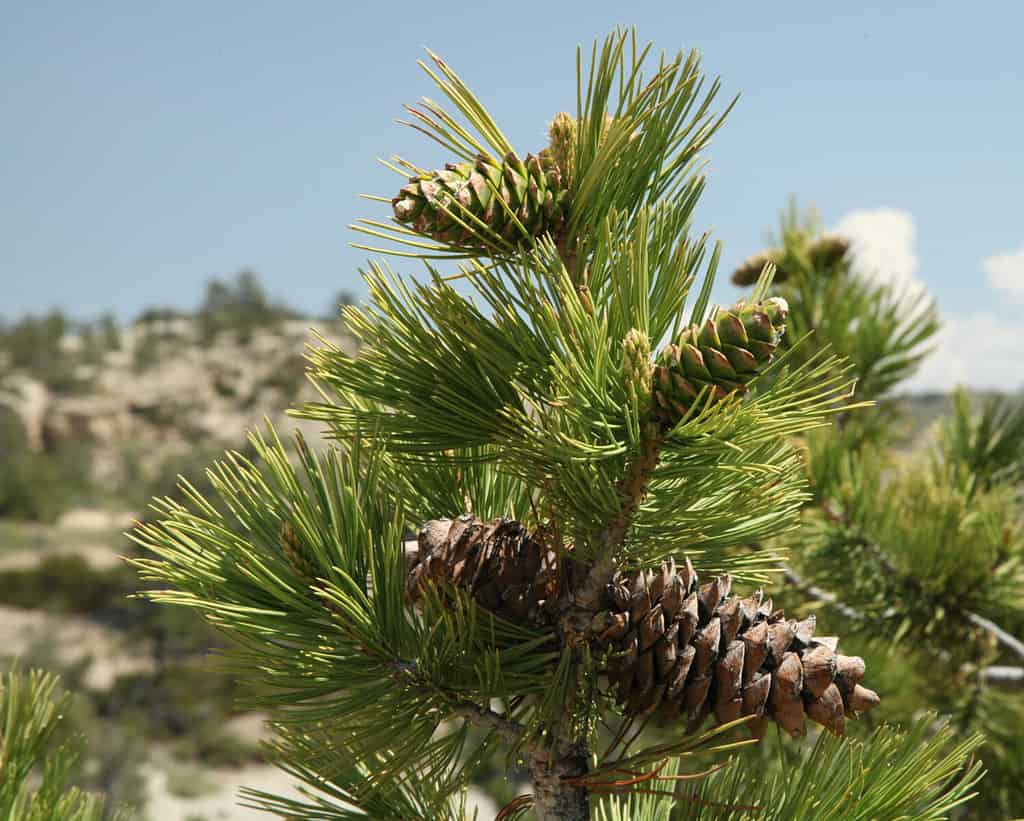
Sickly pine trees might be affected by several problems, such as fungus, lack of water, or salt poisoning.
©163942596/Shutterstock.com
Pine Tree: Species Overview
A quick look at pine trees, in general, can help us understand their requirements, and this can go a long way toward understanding why your tree looks so sickly.
Around 250 pine tree species exist. They’re a diverse range of conifers and abundant in the Northern Hemisphere. The smallest pine is the Siberian dwarf pine, and the tallest is the Ponderosa pine, which can stretch 268 feet skyward.
Pines live long lives; some even reach 1,000 years old. They’re native to Europe, Russia, Southeast Asia, China, and North America’s cool to temperate boreal forests. Most pines prefer cold regions, and many live at high altitudes, up to 17,100 feet, but a few species live in semi-arid deserts, and there are a few rainforest species, too.
The majority of pine trees prefer full sun and very well-drained soil. Soil type preferences range according to species. Some enjoy acid soil, and others prefer chalk or sand.
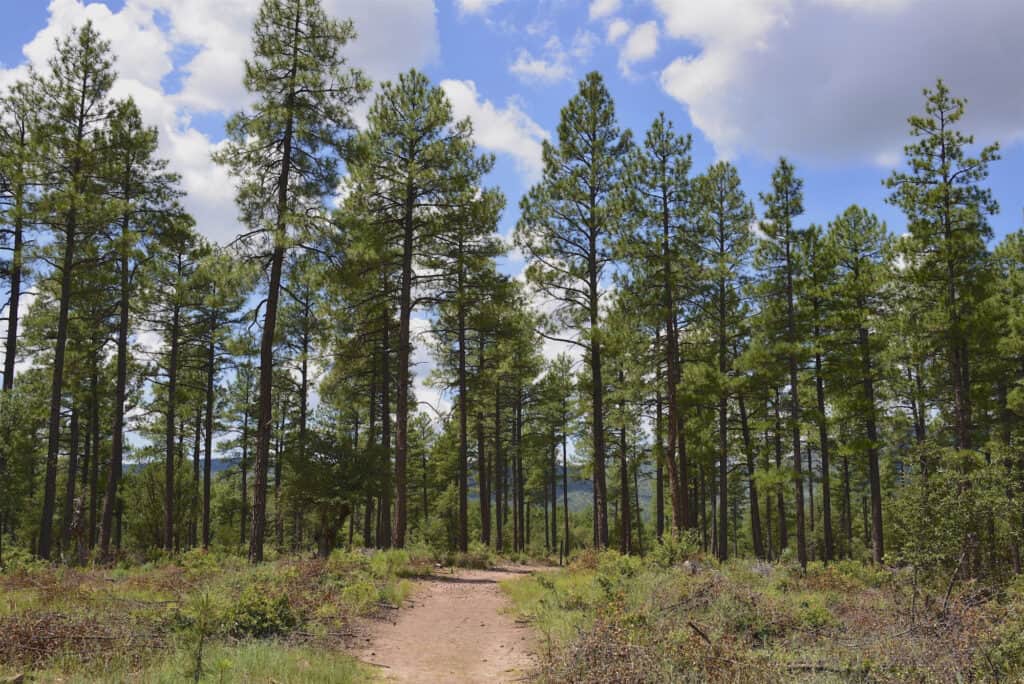
Ponderosa pines are the tallest pine species. Some reach over 250 feet tall.
©SED Travel Photography/Shutterstock.com
Signs Your Pine Tree Is Sickly
So, how do you know a pine tree is sickly?
Discolored Needles
A sick pine chiefly shows dead brown needles or discolored needles. Some fungal infections cause red needles. However, if it’s just the bottom half and it’s fall, this may be a natural needle drop and nothing to worry about.
Bark is Peeling
Pine tree bark is rough and tough, so if you spot peeling sections, that’s usually a sickness like fungal disease.
Pine cone spots
Many pine trees produce cones. Children love them, and they’re great Christmas decorations. However, if you find spots on the pinecones, that indicates a fungal infection.

Spotty pinecones might indicate pine tree fungal infection.
©Chris Hill/Shutterstock.com
Fallen Branches
The shape of a pine tree allows snow to slide off its branches. Tough pine trees don’t usually drop branches unless they’re suffering or a storm has weakened a specific branch. If branches keep falling and hanging at odd angles, then your pine is sickly.
Sawdust
Sawdust is a sign the pine tree is under attack from bugs. Look for small holes, dust, and shavings on the branches and surrounding ground.
Canker
Cankers leave large, wet-looking sores on a pine. It’s usually a fungus doing the damage, but cankers let in bugs that further weaken a tree.
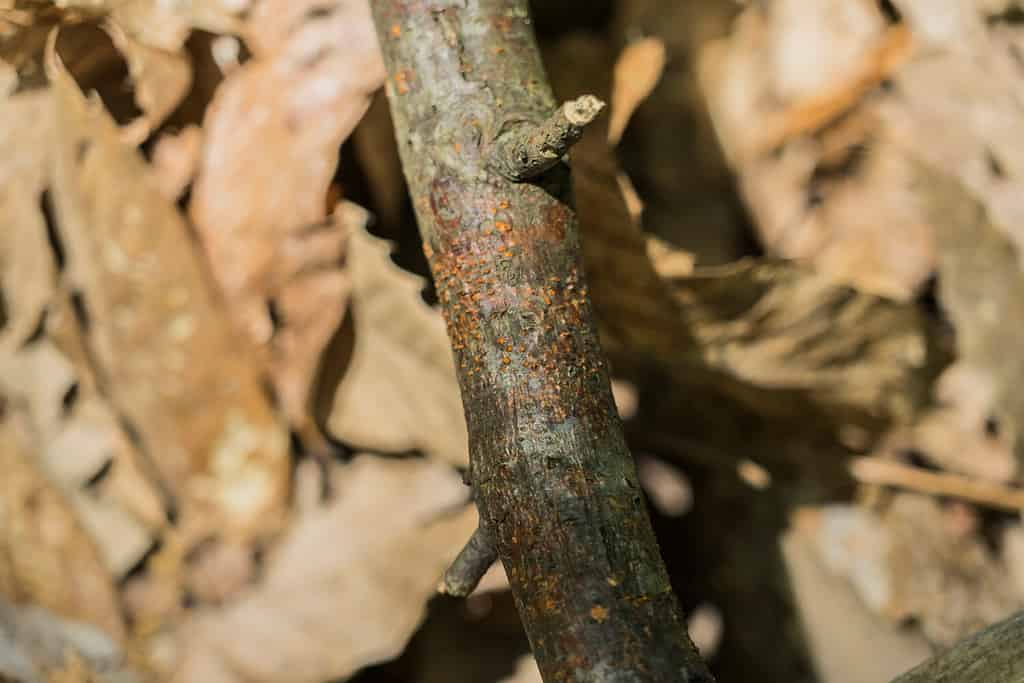
Red spots on the bark indicate a canker is forming.
©riccardo.calli/Shutterstock.com
Leaky Sap
Sap is a tree’s lifeblood. If it’s leaking out in streams, that’s a clear sign your pine is sickly. A small amount of leaking sap is normal.
8 Reasons Your Pine Tree Looks So Sickly
That’s the signs and symptoms of a sickly pine tree. Here are some of the reasons why it’s failing to thrive.
1. Wrong Growing Zone
With 240 species of pine, it’s very easy to pick one that doesn’t suit your growing zone.
First, do you know your growing zone? If not, take a look at the USDA map and find out where you fit in. Then, check if your pine species suits it. Perhaps it’s too hot for your pine that prefers a chilly climate?
Examples include the Ponderosa pine that grows best in zones 3-7 and Douglas fir that thrives in zones 4-6. These beauties might struggle in hot southern states or freezing winters in the far north.
How to avoid it in the future
Although tough pine trees manage to cope with lots of harsh treatment, they might not cope with the wrong hardiness zone. In the future, pick one that suits your zone.

Pick a pine tree that suits your growing zones. Hot Florida may not suit cold-loving pine species.
©Artiom Photo/Shutterstock.com
2. Fungal Disease
Fungal disease causes sickly pines and produces cankers, mold, white creeping wet slime, and blight. Disease often affects the tips first, so check for damage, wilt, discoloration, or die-back there. Lower branches are generally the second area to suffer. If you’ve fallen lower branches, then fungal disease is often to blame.
How to avoid it in the future
If clipping affected areas, spraying with fungicides, and applying borax powder to open wounds doesn’t help, you can avoid the same in the future by ensuring plenty of air circulation.
Pines like fresh air and don’t cope well with the humidity that mold loves. Also, if you remove branches, cut them at a 45-degree angle to aid runoff, and apply borax powder or plant sealant to the wounds. This can help keep invading infections out.

Mold is just one type of fungal disease affecting pine trees.
©aRTI01/Shutterstock.com
3. Not Enough Sunlight
Pines need sunlight. They grow tall to hog all the light and just can’t flourish without it. Shade-planted pines may get really sick from lack of sunlight. In its weakened state, pests and disease may overwhelm it.
How to avoid it in the future
Consider cutting back branches of neighboring trees that create shade. A year or two of sufficient sunlight might bring your pine back to life. If not, choose a different position in the future. The best spot for a pine tree gets sun all year round, so take note of summer shade that isn’t present in winter.
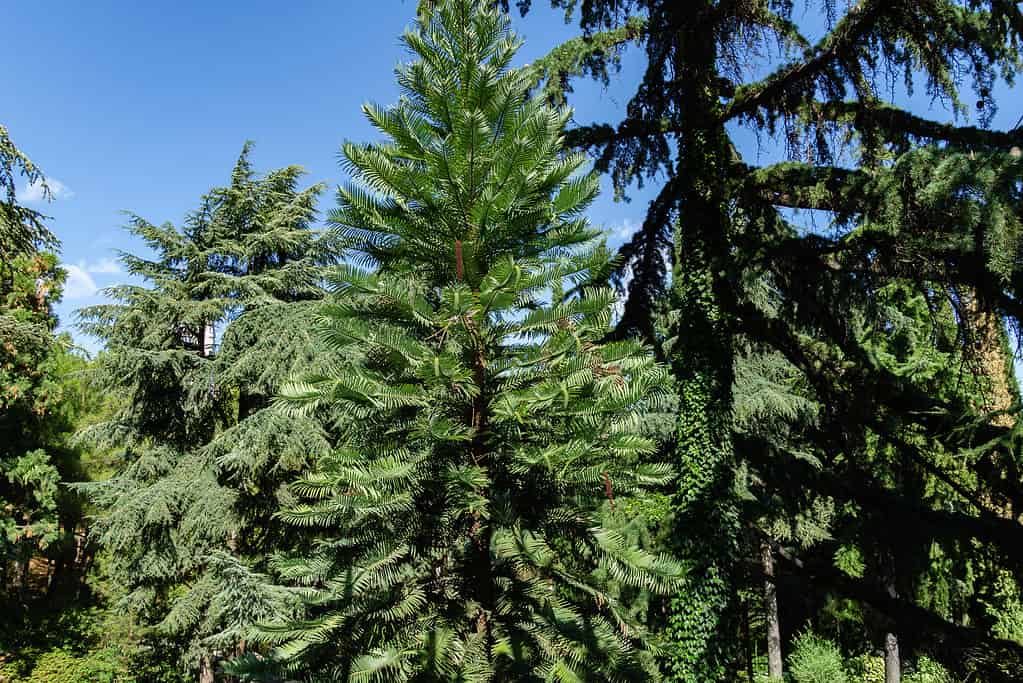
Pine trees need full sun to thrive. Cut neighboring tree branches to allow sufficient light through.
©Marinodenisenko/Shutterstock.com
4. Not Enough Water
Drought-tolerant pines don’t need a great deal of water, but they need some, and newly planted pines need a lot! It’s so easy to underestimate how much water a newly planted pine tree needs. Lack of water is the number one killer of trees!
Water a newly planted pine tree two to three times a week and continue to give it extra water for the first two years. All trees use water to establish a strong root system that extracts groundwater, but newly planted trees don’t have it. It takes a few years to establish properly, and trees need help during that time.
How to avoid it in the future
If extra water doesn’t help your current sickly pine, be sure to freely water its replacement and use mulch to trap moisture around its roots.
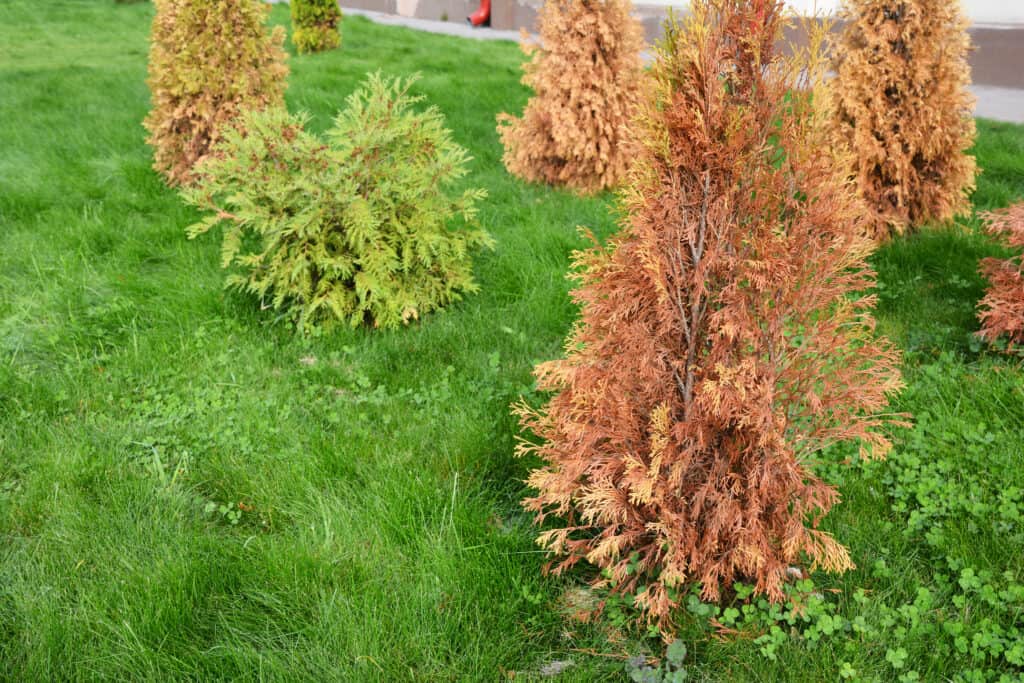
Underwatering is the number one killer of newly planted trees.
©iStock.com/Lex20
5. Salt or De-icer Poisoning
Have you applied salt or de-icer near your pine tree? Perhaps run off or flick up from the driveway is poisoning it.
How to avoid it in the future
Stop using the salt or de-icer. If that’s not an option, then the spot is unsuitable for trees.

De-icing a driveway with salt might poison nearby trees.
©Trygve Finkelsen/iStock via Getty Images
6. Improve Drainage
All pine trees require excellent drainage. If your pine’s in a soggy spot, it will look sickly and eventually drown or die from root rot. Root rot prevents nutrient uptake, which weakens the pine’s ability to fend off fungus, disease, and pests.
How to avoid it in the future
Try adding organic matter around the roots and mulch the tree’s base to try and capture moisture and improve drainage. If that doesn’t work, the tree probably won’t survive.
Choose a well-drained spot that’s some distance from objects that block runoff, such as buildings or foundations. An area that floods or stays squelchy for weeks after rainfall isn’t suitable either.

Pine trees need excellent drainage. They won’t cope with flooded positions.
©Gloria Ann Roberson/Shutterstock.com
7. Poor Air Circulation
Poor air circulation leads to mold and mildew, which are two pine-killing fungi. Improve your current pine tree by cutting back surrounding foliage. Give it room to breathe, and it may survive. Keep a close on eye on summer regrowth that might quickly re-surround your pine and build up humidity.
How to avoid in the future
Choose an open spot, and leave sufficient room for your pine to breathe at its maximum growth.
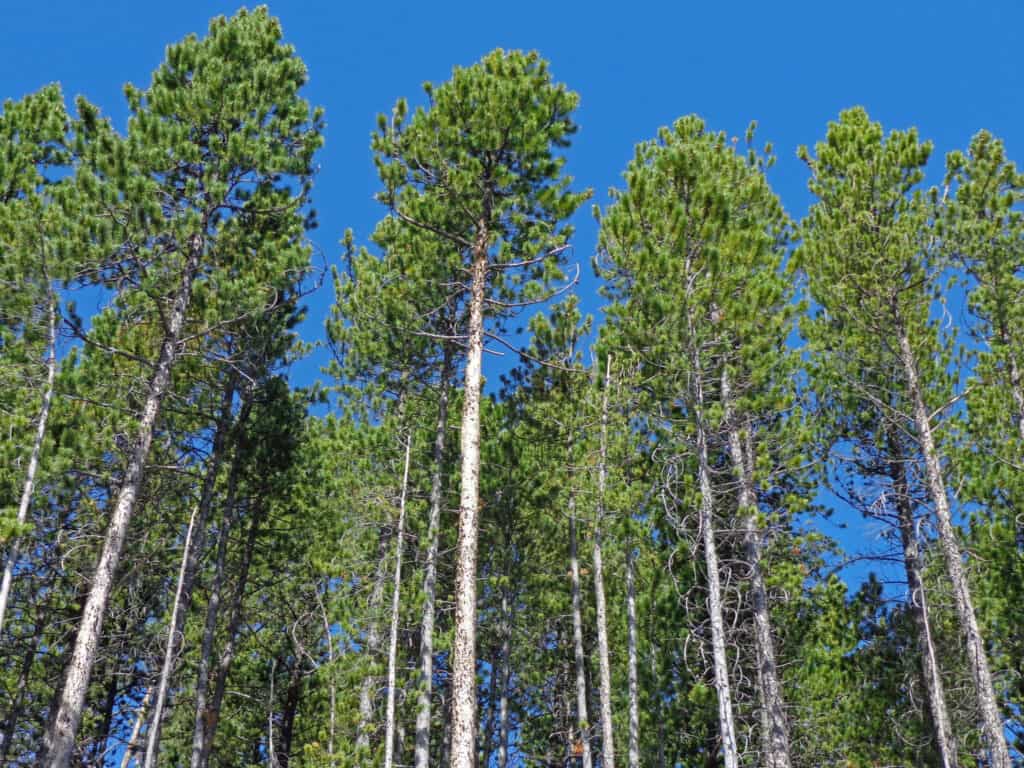
Good air circulation keeps pine trees healthy. Leave enough space to suit its maximum mature spread.
©Sara Kendall/Shutterstock.com
8. Unhealthy Biome
Nothing in nature stands alone. All plants compete or use one another for benefits. Pine trees use surrounding flora and fauna to help their growth. Predatory insects are one of the best ways to maintain a healthy yard. For example, parasitic wasps, ladybugs, and spiders feast on pests, and in turn, they attract birds that eat caterpillars.
How to avoid in the future
Build and maintain a healthy garden ecosystem by banishing pesticides and growing lots of flowering plants. A pond and long grassed areas are great ways to draw in creatures that bring life to a garden and boost its healthy biodiversity.

Ladybugs eat pests like aphids and contribute to improved garden biomes.
©iStock.com/Jan Rozehnal
The photo featured at the top of this post is © Sierra Tango/Shutterstock.com
Thank you for reading! Have some feedback for us? Contact the AZ Animals editorial team.






